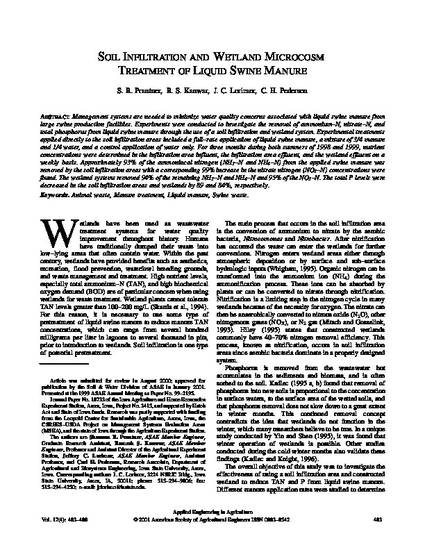
Management systems are needed to minimize water quality concerns associated with liquid swine manure from large swine production facilities. Experiments were conducted to investigate the removal of ammonium–N, nitrate–N, and total phosphorus from liquid swine manure through the use of a soil infiltration and wetland system. Experimental treatments applied directly to the soil infiltration areas included a full–rate application of liquid swine manure, a mixture of 3/4 manure and 1/4 water, and a control application of water only. For three months during both summers of 1998 and 1999, nutrient concentrations were determined in the infiltration area influent, the infiltration area effluent, and the wetland effluent on a weekly basis. Approximately 93% of the ammoniacal nitrogen (NH3–N and NH4–N) from the applied swine manure was removed by the soil infiltration areas with a corresponding 99% increase in the nitrate nitrogen (NO3–N) concentrations were found. The wetland systems removed 94% of the remaining NH3–N and NH4–N and 95% of the NO3–N. The total P levels were decreased in the soil infiltration areas and wetlands by 89 and 84%, respectively.
Available at: http://works.bepress.com/rskanwar/110/

This article was published in Applied Engineering in Agriculture. Vol. 17(4): 483–488, doi:10.13031/2013.6472. Posted with permission.